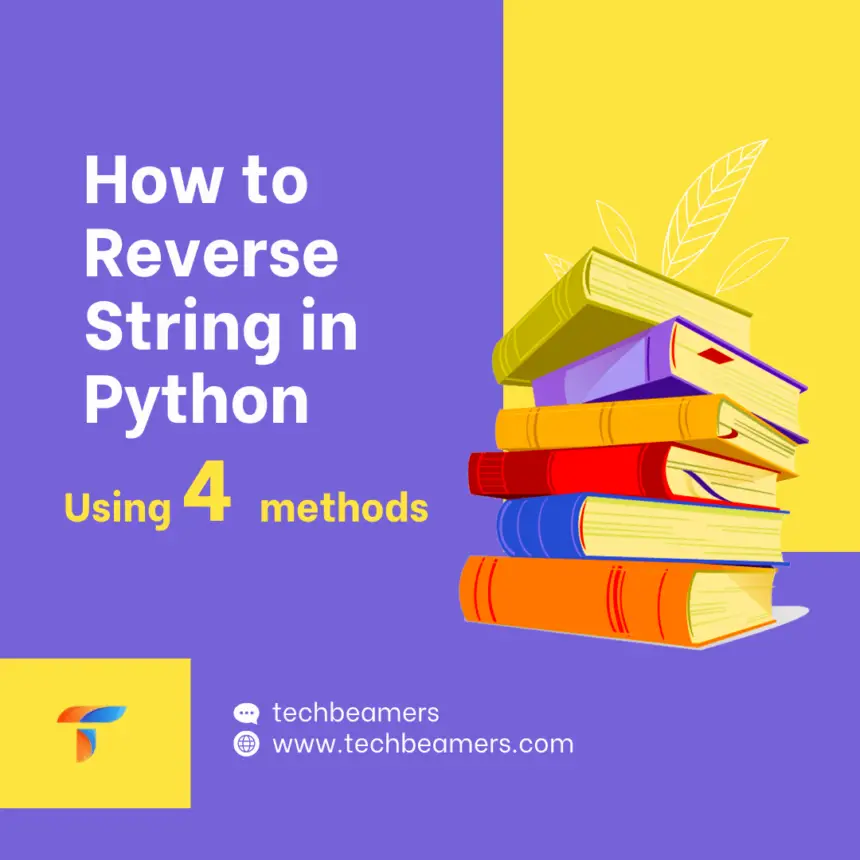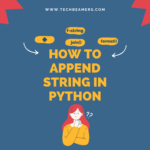In Python, reversing a string can be a useful operation in various programming tasks. Reversed strings are commonly used for tasks like checking for palindromes, text processing, and data manipulation. In this tutorial, we will explore different methods to reverse a string in Python. We will provide code examples and compare these methods to help you choose the most suitable one for your specific needs.
Must Read: Different Ways to Create Multiline Strings in Python
How To Get a String Reversed in Python
We will cover the following Python methods for reversing a string:
| Method Name | Description |
|---|---|
| String Slicing | This is a simple and efficient way to reverse a string using string slicing in Python. |
| For Loop | Reversing a string using a loop can be a more explicit method, allowing you to customize the reversal process. |
| Reversed() | Python provides a built-in function called reversed() that can be used to reverse a string. |
| Recursion | You can also reverse a string using a recursive function, which is a more advanced technique. |
Also Read: Splitting Strings in Python
1. Using String Slicing
Slicing in Python is a way to extract a substring from a string. It is done by using square brackets ([]) and specifying the start and end indices of the substring. The start index is inclusive, but the end index is exclusive.
string = "hello" substring = string[0:3]
You can also use negative indices to slice strings. For example, the following code slices the string "hello" from the third character (index -3) to the end of the string:
string = "hello" substring = string[-3:]
So, let’s see how to reverse a string in Python by using string slicing. Here’s a code example:
def reverse_string(input_string):
return input_string[::-1]
# Example
original_str = "hello, world!"
reversed_str = reverse_string(original_str)
print(reversed_str)In the code above, we define a function reverse_string that takes an input string and returns the reversed string using string slicing. The [::-1] slice notation effectively reverses the string.
2. Using For Loop to Reverse String in Python
A for loop in Python is a way to execute a block of code repeatedly, a certain number of times. It is done by using the for keyword and specifying a sequence of values to iterate over.
Loops are a very powerful tool for working with sequences in Python. They can be used to iterate over sequences, perform operations on each element in a sequence, and more.
Here is a brief summary of how for loops work in Python:
- Executes a block of code repeatedly, a certain number of times.
- Uses the
forkeyword and specifying a sequence of values to iterate over. - Can use a for loop to iterate over lists, tuples, and strings.
Let’s how to reverse the string in Python using a loop. Here’s how you can do it:
def reverse_string(input_string):
reversed_str = ""
for char in input_string:
reversed_str = char + reversed_str
return reversed_str
# Example
original_str = "programming is fun"
reversed_str = reverse_string(original_str)
print(reversed_str)In this code, we define a function reverse_string that iterates through each character in the input string, appending it to the beginning of the reversed_str variable. This effectively reverses the string.
Also Check: How to Reverse a List in Python
3. Using the reversed() Function
The reversed() function in Python returns an iterator that yields the elements of a sequence in reverse order. The sequence can be a string, a list, a tuple, or any other iterable object.
It does not modify the original sequence. It simply returns an iterator that yields the elements of the sequence in reverse order.
Let’s learn – How do you reverse a string in Python using reversed()?
Here’s an example:
def reverse_string(input_string):
return ''.join(reversed(input_string))
# Example
original_str = "python is amazing"
reversed_str = reverse_string(original_str)
print(reversed_str)In the code above, we use the reversed() function to obtain a reversed iterator, and then we use ''.join() to join the characters together into a string.
Check This: Python Ord() Function All You Need to Know
4. Using Recursion to Reverse the String in Python
Recursion is a time-tested way of solving a problem by breaking it down into smaller problems of the same type. You keep solving smaller puzzles until you’ve solved them all, and it helps you tackle the big one.
We can use it to process strings in a variety of ways. For example, the following function recursively reverses a string:
def reverse_string(input_string):
if len(input_string) == 0:
return input_string
else:
return reverse_string(input_string[1:]) + input_string[0]
# Example
original_str = "recursion is powerful"
reversed_str = reverse_string(original_str)
print(reversed_str)In this code, we define a recursive function reverse_string that keeps calling itself until the input string is empty, reversing the string character by character in the process.
Please remember that recursion is quite fast in processing strings in Python. However, it is important to use it with care as it could lead to inefficiency if not used correctly.
Here are some basic rules for using recursion:
- Just be clear about when to come out of the unending loop.
- Avoid it to fix problems that you can do more efficiently using other methods.
- Use memoization to avoid recalculating the same results multiple times.
Don’t Miss: Python Function Map
Comparing the Methods
Let’s compare the methods that we tried above and provide examples to reverse a string in Python.
| Method | Simplicity | Performance | Customization |
|---|---|---|---|
| String Slicing | Easy | Good | Limited |
| For Loop | Moderate | Good | High |
| Reversed() Function | Easy | Good | Limited |
| Recursion | Moderate | Moderate | High |
- String Slicing: This method is the simplest and has good performance. It’s suitable when you need a quick, straightforward solution without much customization.
- Loop: The loop method provides a balance between simplicity and customization. It’s a good choice when you want to reverse a string and potentially perform additional operations on it during the process.
reversed()Function: This method is simple and performs well. It’s a good choice when you need a quick reversal and don’t require extensive customization.- Recursion: The recursive method is more complex and has moderate performance. It’s a suitable choice when you want to gain a deeper understanding of recursion or when specific customization is required.
Also Check: Python Lambda Function Usage
Conclusion
We learned that reversing a string in Python is possible using different ways. While each method differed from the others in its own way, some were more flexible than others. Now, the choice of method depends on your specific needs. Here’s a quick summary:
- Use String Slicing for a simple and efficient solution when customization is not a priority.
- Use a Loop when you want a balance between simplicity and customization, and you need to perform additional operations during the reversal process.
- Use the
reversed()Function for a quick and simple reversal when customization is not extensive. - Use Recursion when you want to explore recursion in Python or when specific customization is required.
Choose the method that best fits your programming needs, and you’ll be able to reverse strings effectively in Python.









